-
 Bitcoin
Bitcoin $105,641.3708
0.06% -
 Ethereum
Ethereum $2,536.3816
-1.10% -
 Tether USDt
Tether USDt $1.0004
0.00% -
 XRP
XRP $2.1497
0.21% -
 BNB
BNB $647.7244
-0.64% -
 Solana
Solana $145.9061
-0.86% -
 USDC
USDC $0.9999
0.00% -
 Dogecoin
Dogecoin $0.1781
0.13% -
 TRON
TRON $0.2722
0.39% -
 Cardano
Cardano $0.6275
-1.63% -
 Hyperliquid
Hyperliquid $40.5787
-2.94% -
 Sui
Sui $2.9833
-1.77% -
 Chainlink
Chainlink $13.2690
-0.40% -
 Bitcoin Cash
Bitcoin Cash $436.8960
-1.77% -
 UNUS SED LEO
UNUS SED LEO $9.1071
0.82% -
 Stellar
Stellar $0.2579
-0.46% -
 Avalanche
Avalanche $19.0519
-1.27% -
 Toncoin
Toncoin $2.9630
-1.62% -
 Shiba Inu
Shiba Inu $0.0...01214
0.53% -
 Litecoin
Litecoin $85.7989
-0.44% -
 Hedera
Hedera $0.1536
-3.01% -
 Polkadot
Polkadot $3.7912
-0.51% -
 Ethena USDe
Ethena USDe $1.0003
-0.01% -
 Monero
Monero $313.5553
1.28% -
 Dai
Dai $1.0000
0.00% -
 Bitget Token
Bitget Token $4.5263
-0.52% -
 Uniswap
Uniswap $7.4716
-1.35% -
 Pepe
Pepe $0.0...01105
-1.07% -
 Pi
Pi $0.6167
6.59% -
 Aave
Aave $276.1029
-4.42%
Is it necessary to stop loss when the volume falls below the 60-day moving average?
When the price is above the 60-day MA with declining volume, it may signal weakening momentum, prompting traders to reassess their positions.
Jun 14, 2025 at 11:07 pm
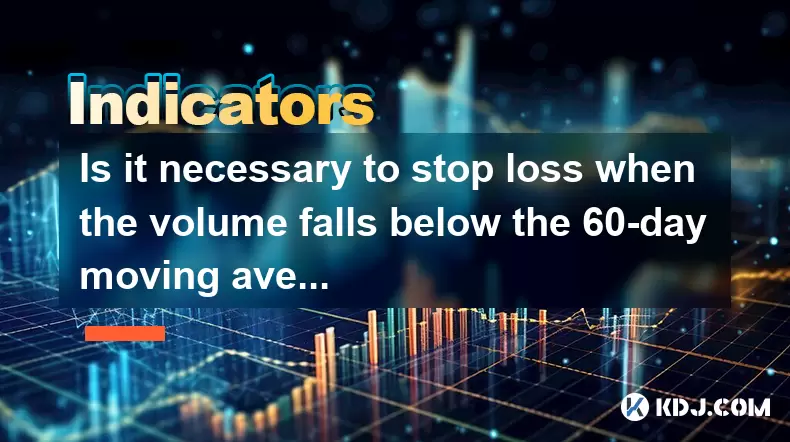
Understanding the 60-Day Moving Average in Cryptocurrency Trading
The 60-day moving average (MA) is a widely used technical indicator in cryptocurrency trading that helps traders assess the long-term trend of an asset. It calculates the average price of a cryptocurrency over the past 60 days and smooths out price volatility, offering a clearer view of the underlying momentum. Traders often use this metric to determine whether an asset is in an uptrend or downtrend. When the current price is above the 60-day MA, it suggests strength; when it's below, it may signal weakness.
In crypto markets, where volatility can be extreme, understanding how volume interacts with key moving averages becomes crucial for risk management. Volume is the number of shares or contracts traded in a security or market during a given period. In the context of digital assets, volume reflects the total amount of coins traded on exchanges over time. A drop in volume while prices are near or below the 60-day MA could indicate waning interest or a lack of conviction among traders.
The Role of Volume in Confirming Price Movements
Volume acts as a confirmation tool in technical analysis. A rising price accompanied by increasing volume typically signals strong buying pressure and confirms the uptrend. Conversely, if the price rises but volume remains low or declines, it may suggest that the rally lacks support and could be short-lived. Similarly, when the price falls below the 60-day MA and volume also drops, it raises questions about the sustainability of the downtrend.
Traders should pay close attention to volume patterns around key moving averages because they can provide early warnings about potential reversals or continuations. For instance, a sharp decline in price below the 60-day MA with high volume might indicate panic selling and a possible bottoming phase. On the other hand, a gradual drift below the same level with declining volume might imply a slow loss of bullish sentiment without a clear direction.
Interpreting Low Volume in Relation to Stop Loss Strategy
A stop loss is a risk management tool designed to limit losses on a trade by automatically closing the position when the price reaches a specified level. The decision to place a stop loss when volume drops below the 60-day MA depends on several factors, including the trader’s strategy, risk tolerance, and the broader market environment.
If a trader notices that both price and volume are falling below the 60-day MA, it may signal weakening demand. In such cases, setting a stop loss just below the recent swing low or the 60-day MA itself could help protect capital from further downside. However, it's essential to distinguish between temporary pullbacks and actual trend reversals. Sometimes, volume dips during consolidation phases and doesn't necessarily indicate a reversal.
- Analyze the candlestick pattern to see if there's rejection at the 60-day MA
- Check for support/resistance levels near the moving average
- Observe the Relative Strength Index (RSI) or MACD for divergence
Each of these steps provides additional context before deciding whether to implement a stop loss.
How to Determine If a Stop Loss Is Necessary Below the 60-Day MA
To evaluate whether placing a stop loss is necessary when volume is below the 60-day MA, traders should consider multiple inputs:
- Examine the historical behavior of the asset around the 60-day MA — has it acted as support or resistance in the past?
- Compare current volume levels to the average volume over the last 60 days — is it significantly lower than usual?
- Look at the broader market sentiment — is the entire sector experiencing a sell-off?
For example, if Bitcoin is approaching its 60-day MA and volume is dropping, but Ethereum and other altcoins are holding above their respective MAs with healthy volume, then the drop in Bitcoin might not warrant an immediate stop loss. Instead, it could represent a relative weakness rather than a systemic issue.
Another consideration is the timeframe being analyzed. Short-term traders may react more aggressively to volume and moving average crossovers on hourly or daily charts, while long-term investors may ignore such signals unless they persist across multiple timeframes.
Practical Steps for Implementing a Stop Loss in Low Volume Scenarios
When volume is below the 60-day MA, and you're considering placing a stop loss, follow these practical steps:
- Identify key support levels below the current price and set your stop just below one of them.
- Use a percentage-based stop, such as 5–10% below the entry price, depending on the asset’s volatility.
- Consider using a trailing stop loss if the price is trending downward but still showing occasional bounces.
- Always backtest your strategy on historical data to see how it would have performed under similar conditions.
- Monitor order books and liquidity levels — low volume can sometimes lead to slippage, especially in smaller-cap cryptocurrencies.
By combining these methods, traders can create a more robust risk management plan that adapts to changing market dynamics. It's important to remember that no single indicator guarantees success, but integrating volume and moving average analysis into your trading plan can improve decision-making.
Frequently Asked Questions
Q: Can volume alone be used to make trading decisions?
No, volume should always be used in conjunction with other indicators like moving averages, RSI, or MACD. Relying solely on volume may lead to false signals or missed opportunities.
Q: What does it mean if the price is above the 60-day MA but volume is decreasing?
This scenario suggests that although the trend is still positive, the momentum behind it is weakening. Traders should look for signs of exhaustion or consolidation.
Q: Should I exit a trade if volume drops below the 60-day MA?
Not necessarily. Evaluate the broader context, including price action, chart patterns, and overall market conditions before making a decision.
Q: How do I adjust my stop loss if volume is low but the price hasn’t broken the 60-day MA?
You may want to tighten your stop slightly to protect gains, but avoid exiting prematurely unless other indicators confirm a reversal.
Disclaimer:info@kdj.com
The information provided is not trading advice. kdj.com does not assume any responsibility for any investments made based on the information provided in this article. Cryptocurrencies are highly volatile and it is highly recommended that you invest with caution after thorough research!
If you believe that the content used on this website infringes your copyright, please contact us immediately (info@kdj.com) and we will delete it promptly.
- The non-fungible token market has experienced another slump in April 2025
- 2025-06-15 10:25:12
- CZ Explains Hong Kong's Pro-Crypto Stance, Acting as a Sandbox for China
- 2025-06-15 10:25:12
- XRP Futures Ratio Hits 1-month Low as Shorts Outnumber Longs By a Considerable Margin
- 2025-06-15 10:20:11
- The U.S. Securities and Exchange Commission (SEC) has delayed its decision on several spot crypto ETFs
- 2025-06-15 10:20:11
- Gros Islet, Saint Lucia, Saint Lucia – Structural changes in the global trading landscape
- 2025-06-15 10:15:11
- Trump Media & Technology Group (TMTG) Is Developing a Utility Token to Power Truth+ Subscriptions
- 2025-06-15 10:15:11
Related knowledge
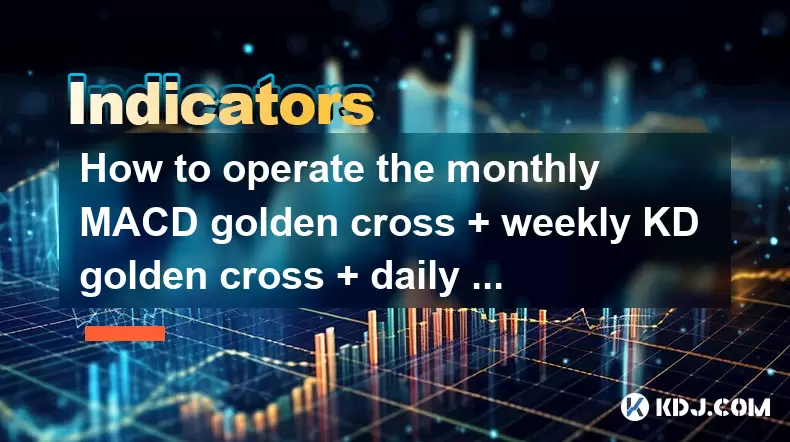
How to operate the monthly MACD golden cross + weekly KD golden cross + daily volume breakthrough?
Jun 15,2025 at 05:36am
Understanding the Strategy: Monthly MACD Golden CrossTo effectively operate the monthly MACD golden cross, traders must first understand what this signal entails. The MACD (Moving Average Convergence Divergence) golden cross occurs when the MACD line crosses above the signal line on a given chart timeframe. When this happens on the monthly chart, it sug...
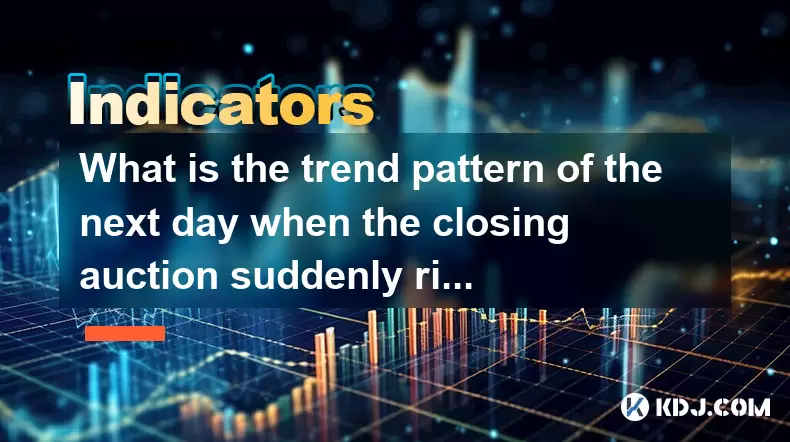
What is the trend pattern of the next day when the closing auction suddenly rises?
Jun 15,2025 at 08:15am
Understanding Closing Auctions in Cryptocurrency MarketsIn the context of cryptocurrency trading, a closing auction refers to a mechanism used by exchanges to determine the closing price of an asset at the end of a trading session. This process typically occurs within a short time window before the market closes for the day and aims to provide a fair an...

What does it mean when the volume fluctuates during the sideways trading at high levels?
Jun 15,2025 at 10:28am
Understanding Volume Fluctuations in Sideways TradingWhen volume fluctuates during sideways trading at high levels, it refers to the changes in the number of assets traded over a given period while the price remains relatively stable, moving within a defined range. This phenomenon typically occurs when the market lacks a clear directional bias—neither b...
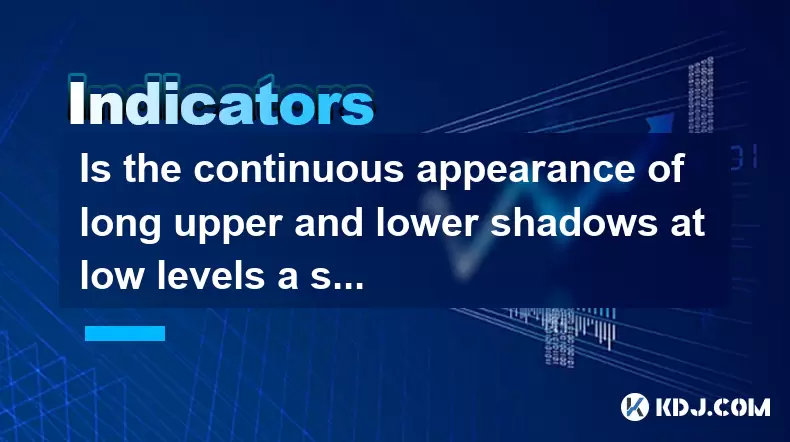
Is the continuous appearance of long upper and lower shadows at low levels a signal of accumulation?
Jun 15,2025 at 01:43am
Understanding Long Upper and Lower Shadows in Candlestick ChartsIn the world of cryptocurrency trading, candlestick patterns are widely used to analyze price movements. A long upper shadow, also known as a wick or tail, indicates that the price rose significantly during the period but was pushed back down by selling pressure. Conversely, a long lower sh...
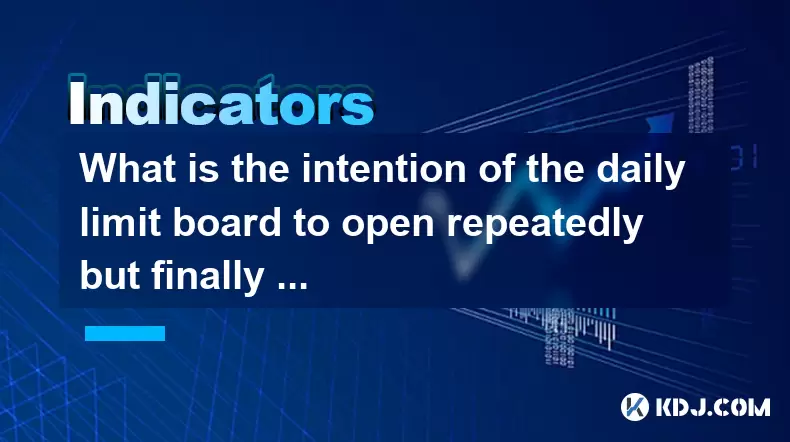
What is the intention of the daily limit board to open repeatedly but finally close?
Jun 15,2025 at 01:08am
Understanding the Daily Limit Board in Cryptocurrency TradingIn cryptocurrency trading, a daily limit board refers to a price movement restriction mechanism applied by certain exchanges or regulatory bodies. This mechanism is primarily used to prevent extreme volatility and panic selling or buying during periods of intense market fluctuation. When an as...

How to calculate the probability of trend continuation after the MACD column divergence?
Jun 14,2025 at 08:01am
Understanding MACD Column DivergenceThe Moving Average Convergence Divergence (MACD) is a widely used technical indicator in cryptocurrency trading. The MACD column, also known as the histogram, represents the difference between the MACD line and the signal line. When price makes a new high or low but the MACD histogram does not confirm this movement, a...

How to operate the monthly MACD golden cross + weekly KD golden cross + daily volume breakthrough?
Jun 15,2025 at 05:36am
Understanding the Strategy: Monthly MACD Golden CrossTo effectively operate the monthly MACD golden cross, traders must first understand what this signal entails. The MACD (Moving Average Convergence Divergence) golden cross occurs when the MACD line crosses above the signal line on a given chart timeframe. When this happens on the monthly chart, it sug...

What is the trend pattern of the next day when the closing auction suddenly rises?
Jun 15,2025 at 08:15am
Understanding Closing Auctions in Cryptocurrency MarketsIn the context of cryptocurrency trading, a closing auction refers to a mechanism used by exchanges to determine the closing price of an asset at the end of a trading session. This process typically occurs within a short time window before the market closes for the day and aims to provide a fair an...

What does it mean when the volume fluctuates during the sideways trading at high levels?
Jun 15,2025 at 10:28am
Understanding Volume Fluctuations in Sideways TradingWhen volume fluctuates during sideways trading at high levels, it refers to the changes in the number of assets traded over a given period while the price remains relatively stable, moving within a defined range. This phenomenon typically occurs when the market lacks a clear directional bias—neither b...

Is the continuous appearance of long upper and lower shadows at low levels a signal of accumulation?
Jun 15,2025 at 01:43am
Understanding Long Upper and Lower Shadows in Candlestick ChartsIn the world of cryptocurrency trading, candlestick patterns are widely used to analyze price movements. A long upper shadow, also known as a wick or tail, indicates that the price rose significantly during the period but was pushed back down by selling pressure. Conversely, a long lower sh...

What is the intention of the daily limit board to open repeatedly but finally close?
Jun 15,2025 at 01:08am
Understanding the Daily Limit Board in Cryptocurrency TradingIn cryptocurrency trading, a daily limit board refers to a price movement restriction mechanism applied by certain exchanges or regulatory bodies. This mechanism is primarily used to prevent extreme volatility and panic selling or buying during periods of intense market fluctuation. When an as...

How to calculate the probability of trend continuation after the MACD column divergence?
Jun 14,2025 at 08:01am
Understanding MACD Column DivergenceThe Moving Average Convergence Divergence (MACD) is a widely used technical indicator in cryptocurrency trading. The MACD column, also known as the histogram, represents the difference between the MACD line and the signal line. When price makes a new high or low but the MACD histogram does not confirm this movement, a...
See all articles

























































































